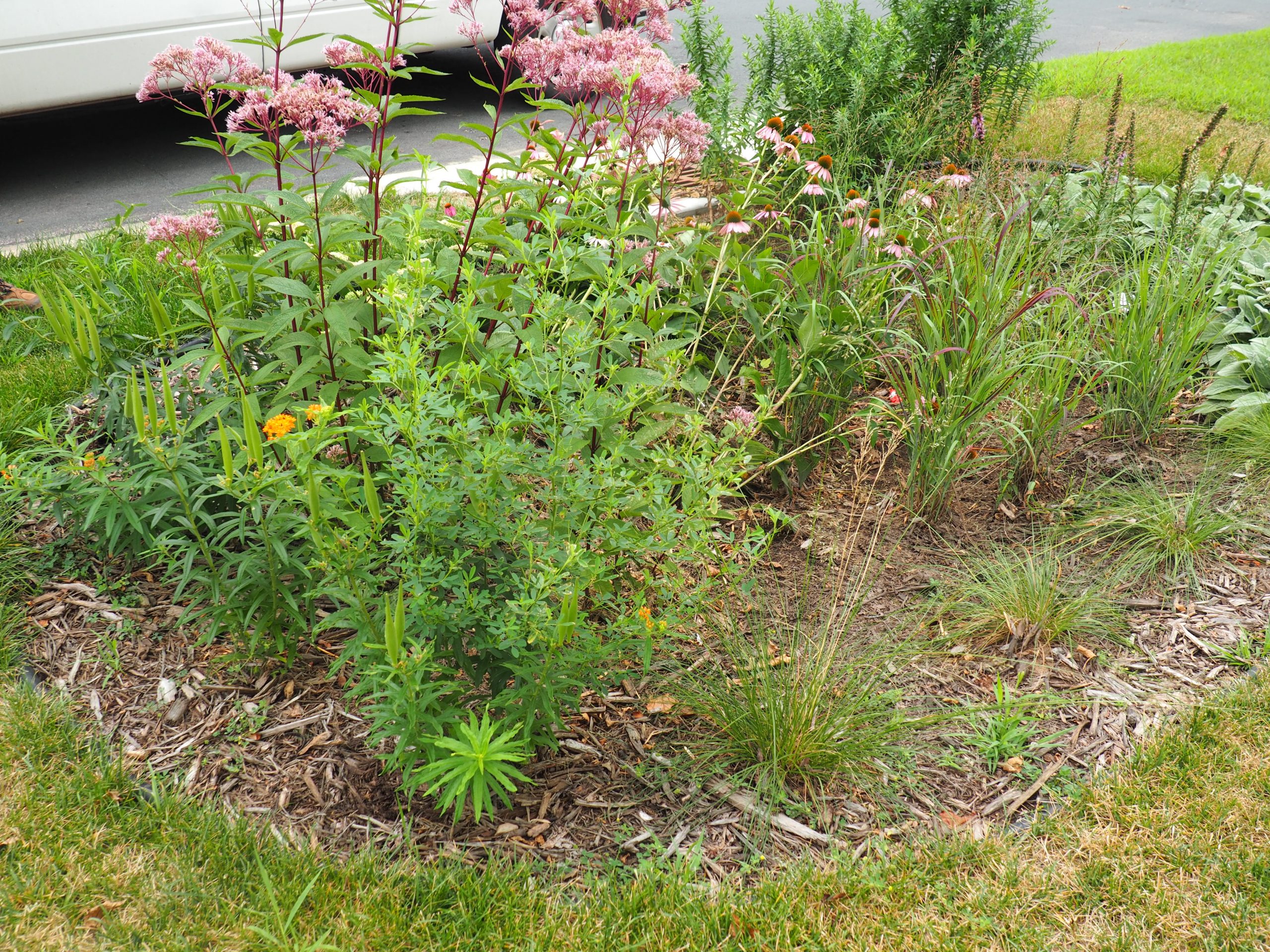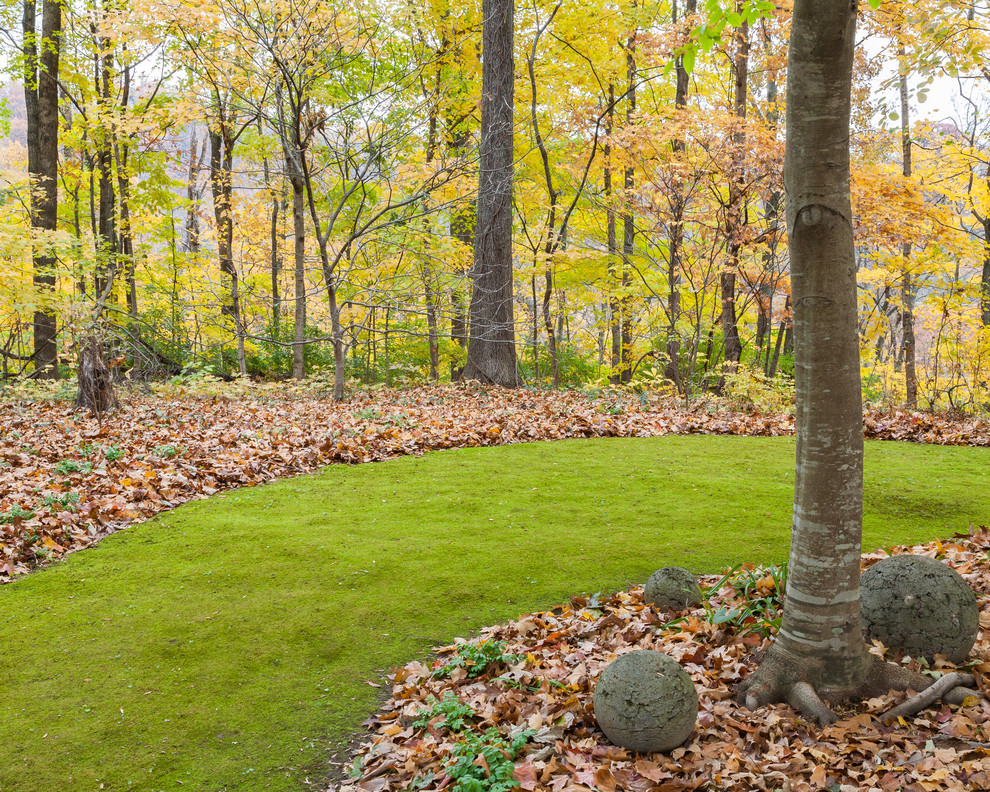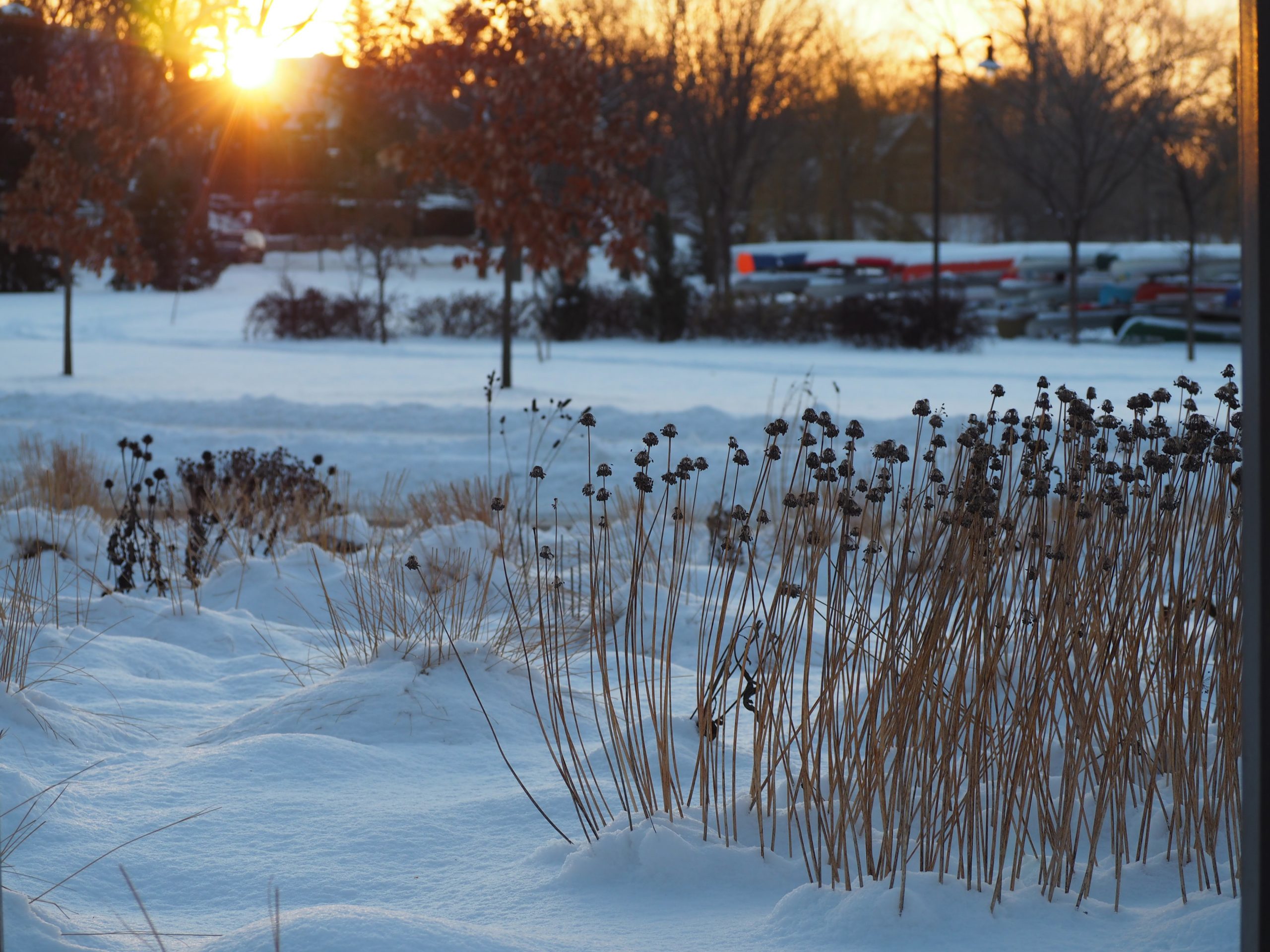As a landscape designer, the most common question that I get asked when walking around a yard with a homeowner is “How do I maintain all of these plants, and when do I do it?!” If you aren’t a Master Gardener or you are just a busy person and don’t have tons of time to dedicate to your yard but you want it to look nice and you want to support pollinators and clean water, then this is a good guide for you! Here’s my down-and-dirty summary of seasonal tasks to keep your yard and raingarden looking good:
Spring: This is probably the busiest time of year in my garden! I don’t cut my plants down in the fall so the spring is when I really clean things up. After the snow melts and when it warms up enough that you feel like working outside, get out your pruners and cut back the dead stalks of your perennials. Leave a few hollow stems sticking up about 3-feet from the ground and you’ll provide habitat for some of our native bees! This is a good time to add a layer of mulch if your landscape beds or raingarden need it. It is easier to apply mulch when plants are just peeking up from the soil instead of when they are tall and full mid-summer. Don’t over mulch; just an inch or so is usually fine. As your perennials start to poke up out of the ground, keep an eye on weeds. If you pull out weeds when they are small it’s a whole lot easier then when they turn in to small trees! I stop to pull a few weeds every time I walk in to my house. This video will help you identify some common garden weeds: https://www.youtube.com/watch?v=n1Am1an40R4
This is also a good time of year to move things around. As a gardener I am always moving perennials and sometimes shrubs around my yard until I find just the right spot. So when the soil warms up enough to dig around, then you can move plants, divide them and give them to friends – just make sure they have poked out of the ground enough for you to identify them!


Summer: Early summer is when I will prune shrubs. It is best to prune them after the danger of frost has passed and I like to wait until they leaf out so I can get a good idea of their shape. This is not a good time for a heavy pruning, just a little cutting back to keep them from getting out of control. During the summer I keep up with weeding and generally try to enjoy my yard. I will occasionally move something around add a new plant that I couldn’t live without from the native plant conference that went to. I make sure my plants get water if it hasn’t rained. Most plants that are getting established need about 1-inch of water per week. A good way to keep track of this is to place a rain gauge in your garden and if it doesn’t fill to 1-inch, then give your plants some water. As summer progresses I love to cut a few coneflowers and some catmint and bring them inside for a bouquet on our dinner table, but I always make sure to leave plenty for pollinators.

Fall: Did you know that fall is a great time to add plants to your yard and garden? You can still plant in the fall. It is a good time to fill in holes or divide and spread out your existing plants. While I do rake and bag up some of the leaves that fall on my lawn (the rest I mow into the lawn with my mulching lawn mower), I generally don’t rake the leaves out of my landscaped areas. I also pile some of the leaves on top of particularly cold-sensitive perennials. I enjoy the progression of yellow, orange and brown colors of perennials and shrubs in the fall so I am really hesitant to cut them to the ground. The exception is hosta. Their big leaves tend to get slimy if you leave them under snow cover all winter, so I wait until mine have fully turned brown and died back, and then I trim them to the ground. Late fall is also a great time to cut back shrubs and you can cut them back a little more than in early summer. Here’s a link to our helpful video on pruning, with some important guidelines: https://www.youtube.com/watch?v=6ElBoBUjNPs

Winter: Enjoy the snow on the tips of the straw-colored grasses. Have fun watching the birds take refuge in the branches of your trees and shrubs, and feeding on the seed heads of your native plants!

